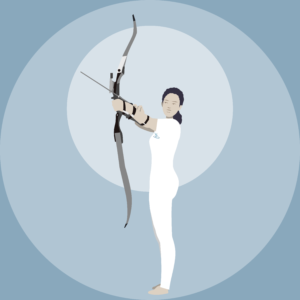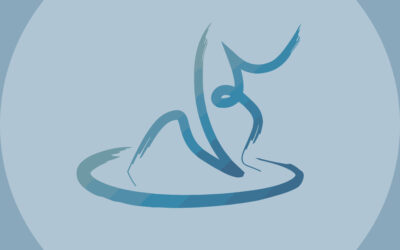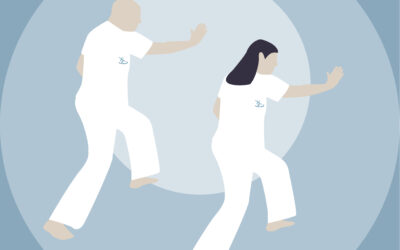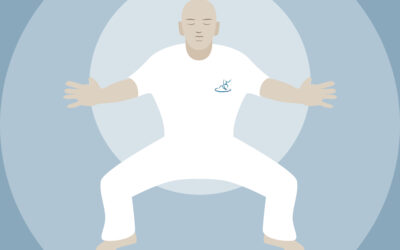Washindo & Archery
Washindo (The way of the peaceful heart) is a contemporary martial art. An art for the here and now that respects the teachings of the past from the world of Shotokai Karate and constantly strives through continuous learning.
Kyudo, which translates to “the way of the bow”, is a traditional Japanese martial art that involves archery and is closely associated with Zen Buddhism.

For both disciplines, true mastery is considered a lifelong journey rather than a destination. Masters in both arts often continue learning and refining their skills throughout their lives. The time required to achieve mastery varies greatly depending on natural ability, dedication, quality of instruction, and training frequency, but generally it requires at least a decade of serious practice.
The casual observer can be forgiven when considering the eight stages of shooting in Kyudo archery and karate from where Washindo has developed one might deduce these distinct art forms have little in common other than they could be described as weapons.
However, when we move from delivering technique to consider the key attributes a different perspective of the two emerges.
Fundamental attributes they share include:
- Mental Discipline
- Both require exceptional focus and concentration
- The ability to maintain composure under pressure
- Mental resilience through long periods of repetitive practice
- Capacity to perform complex movements while staying mentally cantered
- Body Control and Awareness
- Precise control over specific muscle groups
- Deep understanding of proper body alignment
- Ability to replicate exact movements consistently
- Advanced proprioception (awareness of body position in space)
- Breath Control
- Synchronized breathing with movement/release
- Using breath to maintain focus and reduce tension
- Understanding how breathing affects performance
- Breath as a tool for maintaining calm under pressure
- Movement Precision
- Both arts demand extremely precise movements
- Small variations can significantly impact results
- Requires development of muscle memory through repetition
- Emphasis on perfect form over speed
- Training Philosophy
- Both emphasize lifelong learning
- Value patience and gradual improvement
- Respect for tradition and proper technique
- Understanding that mastery is a journey, not a destination
- Physical-Mental Integration
- Success requires harmony between mind and body
- Neither pure physical strength nor mental focus alone is sufficient
- Development of intuitive understanding through practice
- Ability to maintain technique under stress
At their core both arts require an integration of physical precision with mental discipline, developed through years of dedicated practice.
Mental discipline is developed similarly in both archery and karate:
- Meditation and Mindfulness Practice
- Starting training sessions with brief meditation
- Developing present-moment awareness during practice
- Learning to quiet internal dialogue and mental chatter
- Building the capacity to maintain singular focus, often starting with short periods and gradually extending
- Progressive Stress Exposure
- Starting with basic techniques in controlled environments
- Gradually introducing distractions and pressure
- Advancing to competition or performance scenarios
- Learning to maintain technique and focus under increasing pressure
- Structured Repetition
- In archery: Shooting hundreds of arrows with perfect form, focusing on each step of the process
- In karate: Performing kata or basic techniques thousands of times, maintaining full attention on each movement
- Using repetition not just for muscle memory, but for developing mental endurance
- Learning to approach each repetition with fresh attention, avoiding autopilot
- Failure Management
- Learning to analyse mistakes without emotional attachment
- Developing resilience through structured challenge
- Understanding that setbacks are learning opportunities
- Building the capacity to return to proper form after errors
- Breath Control Integration
- Learning to regulate emotional state through breathing
- Using breath as an anchor for focus
- Synchronizing breath with movement
- Using breath control under pressure situations
- Mental Imagery and Visualization
- Practicing techniques mentally
- Visualizing perfect execution
- Mentally rehearsing under pressure scenarios
- Using visualization to maintain skills during recovery periods
The relationship between Mushin, Zen, and martial practice extends deeply into both archery and advanced martial arts training, revealing common principles across these disciplines.
In advanced martial arts practice, Mushin manifests as what practitioners often call a “flow state” – where responses emerge without conscious thought. This is particularly evident in arts like:
Aikido: Morihei Ueshiba emphasized the unity of practitioner and attacker, echoing the non-dualistic relationship between archer and target in Kyudo. The principle of “extending Ki” in Aikido parallels how the Kyudo archer extends intention through the arrow.
Washindo: Tim Barbary stresses one doesn’t mentally read the opponent’s movements but becomes one with the opponent in the present moment, moving flawlessly. Where practitioners describe moments when the sword “moves itself” to block or strike, similar to how a Kyudo archer experiences the arrow releasing itself. The years of basic practice create the same kind of embodied knowledge that Kyudo develops through repeated shooting.
This carries across to Western archery as well. Elite competitive archers often describe entering a state where thinking stops, and perfect shots emerge naturally. While they might not use the term Mushin, they’re describing the same phenomenon – the dissolution of the distinction between archer and action.
The key developmental stages appear consistently across both arts:
- Technical Foundation
- Martial arts: Endless repetition of basic techniques
- Kyudo: Meticulous attention to the eight stages of shooting
- Western archery: Systematic form development and shot sequence
- Integration
- Martial arts: Techniques become reflexive responses
- Kyudo: Individual movements merge into one flowing form
- Western archery: Shot sequence becomes a single unified action
- Transcendence
- Martial arts: Technique disappears into spontaneous expression
- Kyudo: Shooter, bow, and target become one
- Western archery: Perfect shots emerge without conscious control
This process reveals how Zen principles naturally emerge through dedicated practice, regardless of whether they’re explicitly taught in the context of Zen.
Zen (direct experience of reality through meditation) principles through archery (Kyudo) is considered one of the purest martial arts for meditation and spiritual development:
Awa Kenzo master archer in Kyudo, states the archer must achieve Mushin (empty mind) – a state where they become one with the bow, arrow, and target. The physical act of shooting becomes secondary to the mental and spiritual process.
In higher martial arts, Washindo in particular, the relationship between physical technique and spiritual development is profound as it embraces Mushin-no shin (mind of no mind).
The concept of “mushin” (no-mind) in archery manifests when drawing the bow becomes an instinctive act, free from conscious thought. This mirrors how a martial artist’s blends, parries and strikes that must flow naturally without intellectual interference.
In both disciplines, breathing control is paramount. Just as an archer must coordinate their breath with drawing and releasing, a martial artist synchronizes breathing with movement. This creates what’s called “kiai” – the unity of spirit, breath, and action.
Historically the Karate dojo concept of austere training applies equally. Traditional kyudo practitioners stood in freezing waters while shooting, similar to karate practitioners striking makiwara boards thousands of times. This isn’t mere physical conditioning – it’s about transcending physical discomfort to achieve mental clarity.
Thankfully most of us no longer live in a feudal / warrior time living with stress from life and death situations. However, stress continues to play a major role as a risk factor and can contribute to or exacerbate many of these conditions:
- It can increase blood pressure and inflammation, contributing to heart disease
- Chronic stress can suppress immune function, potentially increasing cancer risk
- It can worsen respiratory conditions through tension and anxiety
- Stress hormones may accelerate cognitive decline
- It can lead to behaviours that increase health risks (poor sleep, unhealthy eating, substance use)
The relationship between stress and health is complex because stress works through multiple pathways:
More recently we have come to learn mental clarity can also come from well-practiced Mindfulness, wellness, meditation and flow state activities negating the need for much of the worst austere training.
The NHS now advocate the Practice of mindfulness enabled through deep breathing exercises with progressive muscle relaxation and connecting with others.
In the martial practice with an opponent effectiveness paradoxically increases when the practitioner stops focusing on it. A kyudo master who releases without thinking about hitting the target often achieves better accuracy. Similarly, a martial artist who moves without planning often executes techniques more effectively.
A master archer doesn’t focus on hitting the target – they focus on achieving perfect unity of mind, body and spirit. When this happens, accuracy follows naturally. This mirrors the Zen concept of “mushotoku” – acting without attachment to results.
The legendary Zen and archery master Awa Kenzo would have students shoot blindfolded to help them understand that true archery isn’t about external targets but internal mastery. His student Eugen Herrigel documented this journey in “Zen in the Art of Archery,” showing how years of practice led to moments where “It shoots” rather than “I shoot” – the ultimate expression of egoless action.
Both arts share these key spiritual elements:
- Maintaining awareness after action
- Immovable mind under pressure
- Acting without attachment to results
- Beginner’s mind, remaining humble despite expertise
The ultimate goal in both disciplines isn’t victory over others but victory over oneself – achieving what the Japanese call “kensho” (seeing into one’s true nature). This explains why some martial arts master’s gravitate toward archery as they age – it distils these principles to their purest form.
The physical techniques in both arts serve as vehicles for developing what Zen calls “joriki” – spiritual power through concentrated practice. This power manifests not as domination over others, but as inner peace and self-mastery.
Many renowned martial artists turned to kyudo (archery) in their later years, seeing it as a pure expression of martial and spiritual principles. Notable examples include:
Morihei Ueshiba (1883-1969), founder of Aikido, practiced kyudo extensively in his later years, viewing it as complementary to his aikido principles of blending with energy.
Gichin Funakoshi (1868-1957), the father of modern karate, incorporated kyudo practices into his later training, particularly emphasizing the mental aspects of proper form and breathing.
Kisshomaru Ueshiba (1921-1999), son of Morihei and second Doshu of Aikido, maintained a dedicated kyudo practice alongside his aikido training, especially after age 60.
The integration of kyudo by these masters reflects their recognition that archery distils core martial principles to their essence – perfect form, mushin (empty mind), and zanshin (continued awareness). They found that kyudo’s emphasis on single, perfect shots aligned with the martial arts concept of “ikken hissatsu” (one strike, certain death), while removing the physical intensity that becomes challenging with age.
This progression demonstrates how martial arts training naturally evolves from external power to internal mastery, with kyudo representing a culmination of this journey.
The integration of Zen and martial arts aims to transcend the duality of subject and object – archer becomes one with bow, warrior becomes one with technique. The physical practice becomes a form of moving meditation, leading to what Zen calls “kensho” or insight into true nature.




